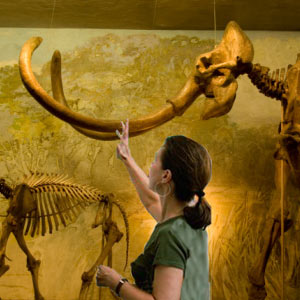The mass diversity in a public is common of those individuals there interest differ, thus as the variety of the public so should be as for the collection of artifacts collection within a museum. Like it is stated “encompass vast range of cultural material-including more than 800,000 works of extraordinary aesthetic, religion, and historical significance” (source c) it is clearly stated on how the National Museum of the American Indian embraces this concept of seeking to all aspects that can include all of the public’s interest. As declare on source B “Peale also offered his visitors performers, a zoo, and an intriguing assembly of biological oddities” (source B), Peale wanted to attract the attention by pulling in there curious side onto his museum. The curator should not underestimate the power of the public, putting out artifacts that are in vast interest will go well with a museum.
As acknowledged previously the citizens are the ones that a museum depends on.
The public’s funds are the very thing that makes it possible for the museum to
at full capacity, at the same time there is a line that should not be overlooked. The whole essence of the museum is to set an education onto their visitors, as seen on source D “leading the anti-sales movement are museum professionals who feel that commercialism has no place within the scope of museum activities” there are those that oppose the idea of a “gift shop” as it has no purpose to the educational value only dollar value. While there are those that believe otherwise as to make balance;” not money or education but money and education”(source D), that instead of the term gift shop museum store should be use as while the goal is still to share information between the public, a souvenir is not to make money but memories and increase artifact size.
When a spectator is observing an artifact it is expected to what is being looked at to be fully accurate. The main thing that lacked in an museum for colonial Williamsburg was accuracy, there were plenty of fun filled facts but it never got to the real extend of the 18th century, as stated by Huxtable “the replacement of reality with selective fantasy” (source E). Huxtable was directing this comment to the colonial Williamsburg museum, there was plenty of how times were simpler with smiles and family not including the bad side of all this, back then slavery was alive and well not to mention famine and disease the people dying young. Americans are being taught history in an inaccurate way that many do not wish to continue on museums all over as taken for source E “for it has taught Americans to prefer-and believe in – a sanitized and selective version of the past”(source E). The other perspective that there is to this issue is simply that while accuracy is what the public wants there is always considerations that should be made to individuals, and be sensitive to the believes and historical culture of all. Stability is key to please the masses there is a way to put something in history without being offensive for a given example the topic of slavery could be told in the way to know the reasons behind and how America has grown from that.
The work of a curator is a lot of critical thinking of the museum and how improvements and organization is being handled. The way that the public puts so much input on the museum is also important for a museum well being. When observing a piece in a museum next time think it is because of the curator this experience is possible.
http://essaysareus.blogspot.com/2011/07/museum-curator.html
http://essaysareus.blogspot.com/2011/07/museum-curator.html


2 comments:
in developed country's government specially focus on players dissertation services and invest forty percent of their income on her education plain this post is a role model of every country.
Nice put up! It is in reality interesting and exceptional. Thanks for sharingQuickbooks Customer Service Number.
Post a Comment